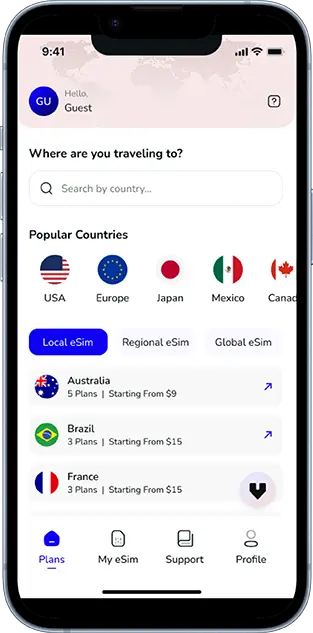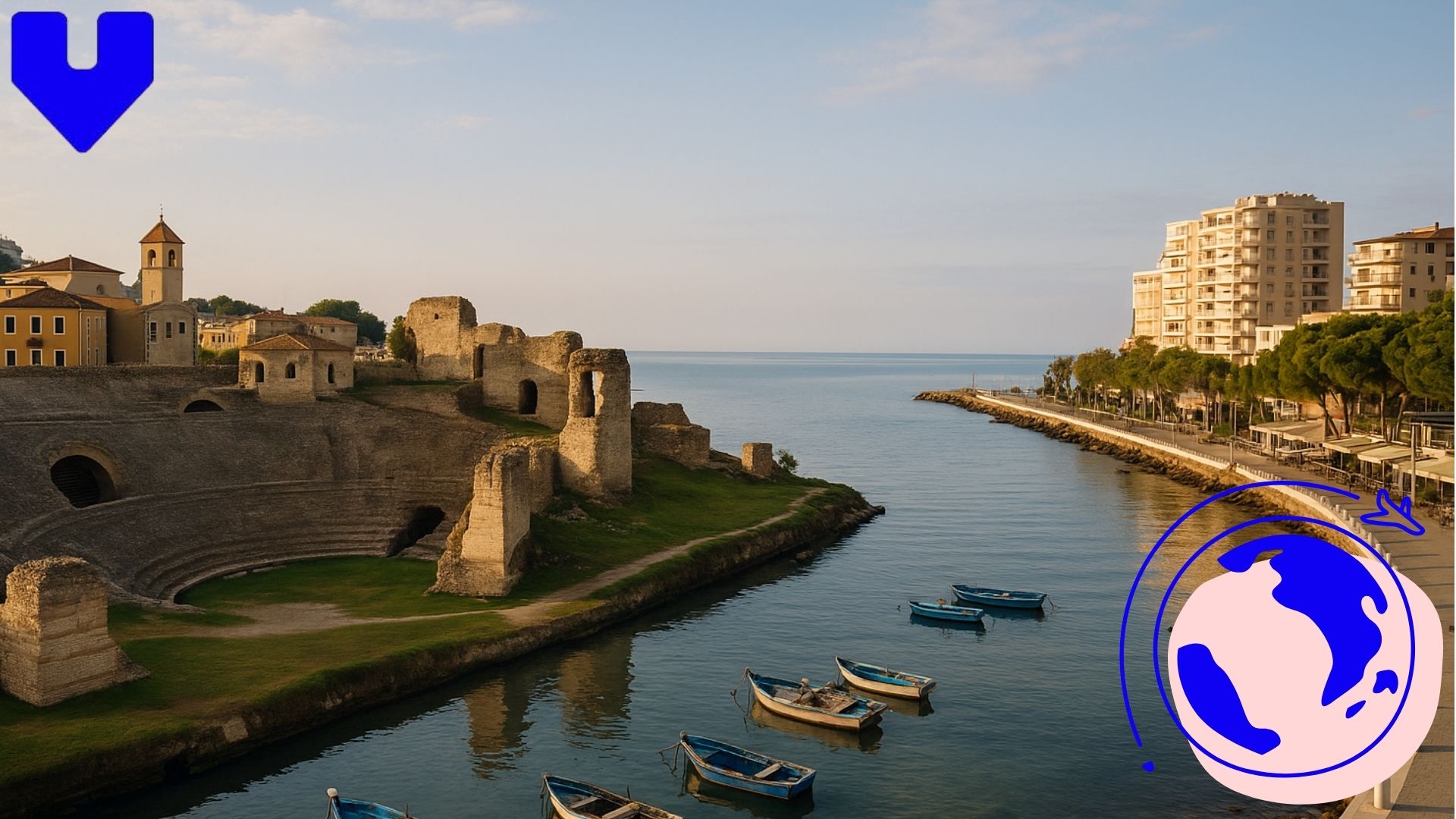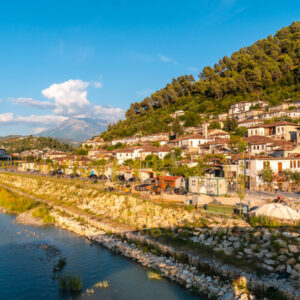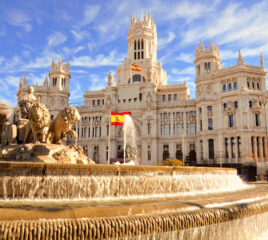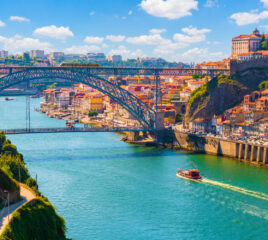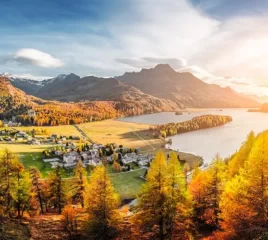Note that iPhone devices from Mainland China aren’t eSIM compatible. Also iPhone devices from Hong Kong and Macao aren’t compatible (except for iPhone 13 Mini, iPhone 12 Mini, iPhone SE 2020 and iPhone XS)
Vlorë sits at the meeting point of the Adriatic and Ionian Seas, a geographical crossroads that has shaped its story for thousands of years. From ancient Illyrian settlements to the Ottoman era and into modern Albania, the city has been a sea gate – a place where ships arrive, goods are exchanged, and cultures meet. This maritime heritage is still visible in its bustling port, its layered architecture, and most of all, in the diversity of its food.
The city’s long history as a trading hub has left more than just ancient ruins and a busy ferry terminal. It has cultivated a food culture in constant dialogue with its surroundings – the saltwater bounty of the coast, the rugged pastures of the nearby mountains, and the fertile plains that yield seasonal vegetables and fruits. The recipes you find here are not inventions of the last decade but the result of centuries of adaptation and exchange, passed down through families and refined by the rhythms of land and sea.
Many travelers see Vlorë as a waypoint, passing through en route to the Albanian Riviera’s sandy coves or starting their coastal journey further north in Durrës – a seaside city where modern cafés meet ancient ruins. Yet, those who choose to pause – even for a couple of days – discover a culinary scene of remarkable depth and sincerity. This is not a city trying to impress with imported trends or over-designed menus. Vlorë’s kitchens, from family-run taverns to street-market stalls, cook with authenticity, favouring the flavours of place over the polish of presentation.
Whether you are biting into a grilled mullet still warm from the charcoal, tasting a mountain herb-infused lamb stew that’s been slow-cooked all morning, or breaking open a dense cornbread baked exactly as a grandmother once taught, every mouthful in Vlorë feels connected to its origin. Meals are less about consumption and more about storytelling – the origin of the olive oil, the path of the fishing boat, the herbs gathered before dawn.
This guide invites you to follow those stories, from the morning markets along the waterfront to the hilltop taverns with panoramic sea views, from the lively core of the city to the olive groves and vineyards of the surrounding villages. It’s a journey that uses flavour as a compass, showing how food in Vlorë is not simply what you eat but a way to navigate – and truly understand – the city itself.
No Kiosks, No Hassles
Activate your Albania eSIM in minutes before reaching Vlorë.
The City’s Food Identity: Land, Sea & Season
Vlorë’s geography shapes its menus more than any culinary trend could. It is a city where three environments converge – the coast, the mountains, and the fertile plains – and each leaves a strong imprint on what locals eat.
From the Sea- The Ionian and Adriatic coasts supply an abundance of seafood: anchovies, sardines, mullet, cuttlefish, shrimp, sea bass, and octopus. By the time the sun rises, the open-air fish market near the port is already in full swing. The air is thick with the scent of salt and the faint smokiness of early-morning grills. Fishermen, still in boots and weatherworn jackets, shout prices over the chatter of customers. Baskets brim with silver-scaled sardines, while neat rows of sea bass gleam on beds of ice. Octopus tentacles curl and flex, proof of their freshness.
In Vlorë, seafood is rarely dressed up with heavy sauces. Simplicity is the hallmark. Mullet is grilled whole over charcoal, its skin blistering to a crisp before being brushed with olive oil. Sardines are pan-fried and eaten with lemon wedges. Cuttlefish is grilled or stewed with tomatoes and onions, creating a hearty dish without losing its briny edge.
From the Mountains- Just inland, the Kurvelesh highlands provide a different palette of flavours. The terrain yields free-grazing lamb and goat, cheeses made from sheep’s or goat’s milk, and an array of mountain herbs – oregano, thyme, and sage among them. These ingredients bring an earthy depth to Vlorë’s cooking. Lamb is often slow-roasted or baked in a yoghurt sauce, while goat is simmered in clay pots with garlic and rosemary until it falls from the bone. Herbal teas, brewed from dried mountain plants, are sipped both for pleasure and for their medicinal qualities.
From the Fields- The agricultural plains surrounding Vlorë are rich with produce that changes with the season. Summer markets overflow with tomatoes so ripe they split under their weight, red onions, wild rocket, figs, and grapes. Autumn brings corn – boiled fresh or milled into flour for breads like kulaç – and peppers, both for fresh eating and for pickling. The rhythm of preservation is deeply ingrained: figs boiled into thick glyko syrup, herbs hung to dry for winter stews, and olives cured in brine for the colder months.
Stay Connected in Vlorë
Avoid signal drops in Vlorë’s rural kitchens and olive farms.
The interplay between these three environments – sea, mountain, field – is what makes Vlorë’s The interplay between these three environments – sea, mountain, and field – is what makes Vlorë’s cuisine truly distinctive. The menu shifts naturally with the seasons, and the city’s best taverns adjust accordingly. Visiting at different times of the year can reveal entirely new flavor profiles, even at the same table. A similar balance between landscape and tradition defines the food culture further south in Gjirokastër, where history meets hospitality – a journey best planned with the Gjirokastër: Solo Travel Safety Guide.
Signature Dishes & Everyday Eats
The best way to begin exploring Vlorë’s culinary landscape is through its most emblematic dishes, each carrying a part of the city’s identity.
Tavë Kosi me Qengj- This baked lamb and yoghurt casserole has roots in Elbasan, but the Vlorë version is distinct. The lamb is first seasoned with wild mountain herbs, sometimes marinated overnight, before being nestled into a tangy yoghurt-egg mixture. Baked until golden and slightly firm, it emerges from the oven bubbling at the edges. The yoghurt’s acidity cuts through the lamb’s richness, making each bite both hearty and fresh.
Fërgesë e Detit- A seafood variation of the beloved fërgesë dish, this casserole combines mussels, shrimp, and octopus with red peppers, onions, tomatoes, and soft cheese. The result is creamy yet balanced, with the seafood’s sweetness contrasting against the tang of the cheese and the mild heat of the peppers. Served in individual clay pots, it retains heat beautifully, allowing you to linger over each spoonful.
Grilled Mullet or Sea Bass- In Vlorë, grilled fish is an art form. The fish is cleaned but left whole, seasoned lightly with salt, and grilled skin-side down until the flesh turns opaque and flakes easily. It’s served simply, often with a side of boiled wild greens dressed in vinegar and olive oil. The minimal seasoning lets the fish’s natural flavour – shaped by the clean, salt-rich waters – shine through.
Arapash me Mish Dashi- This rustic lamb and cornmeal stew reflects the city’s inland connections. The lamb is browned with onions before being simmered with cornmeal, creating a thick, porridge-like consistency. Seasoned with rosemary and sometimes enriched with lard, it’s a dish made for long conversations and cool evenings. Pickled green tomatoes or garlic paste often accompany it, cutting through its richness.
Street & Market Bites- To eat like a local, you have to visit the markets. There, you’ll find boiled corn sprinkled with chilli salt, dhallë (a tangy yoghurt drink) in repurposed glass bottles, hand-rolled byrek stuffed with wild greens or tomatoes, and petulla – golden fried dough balls – served with honey or powdered sugar.
Café Culture- By midday, the pace in Vlorë slows. Locals retreat to shaded courtyards or small cafés along Rruga Justin Godar. Meze plates appear, laden with olives, white cheese, smoked fish, and fig compote. Seasonal salads are drenched in olive oil and scattered with crushed walnuts. The owners – often the same people who serve your food – might offer a glass of raki “on the house,” especially if you linger and chat.
From Markets to Villages: Where Food Tells a Story
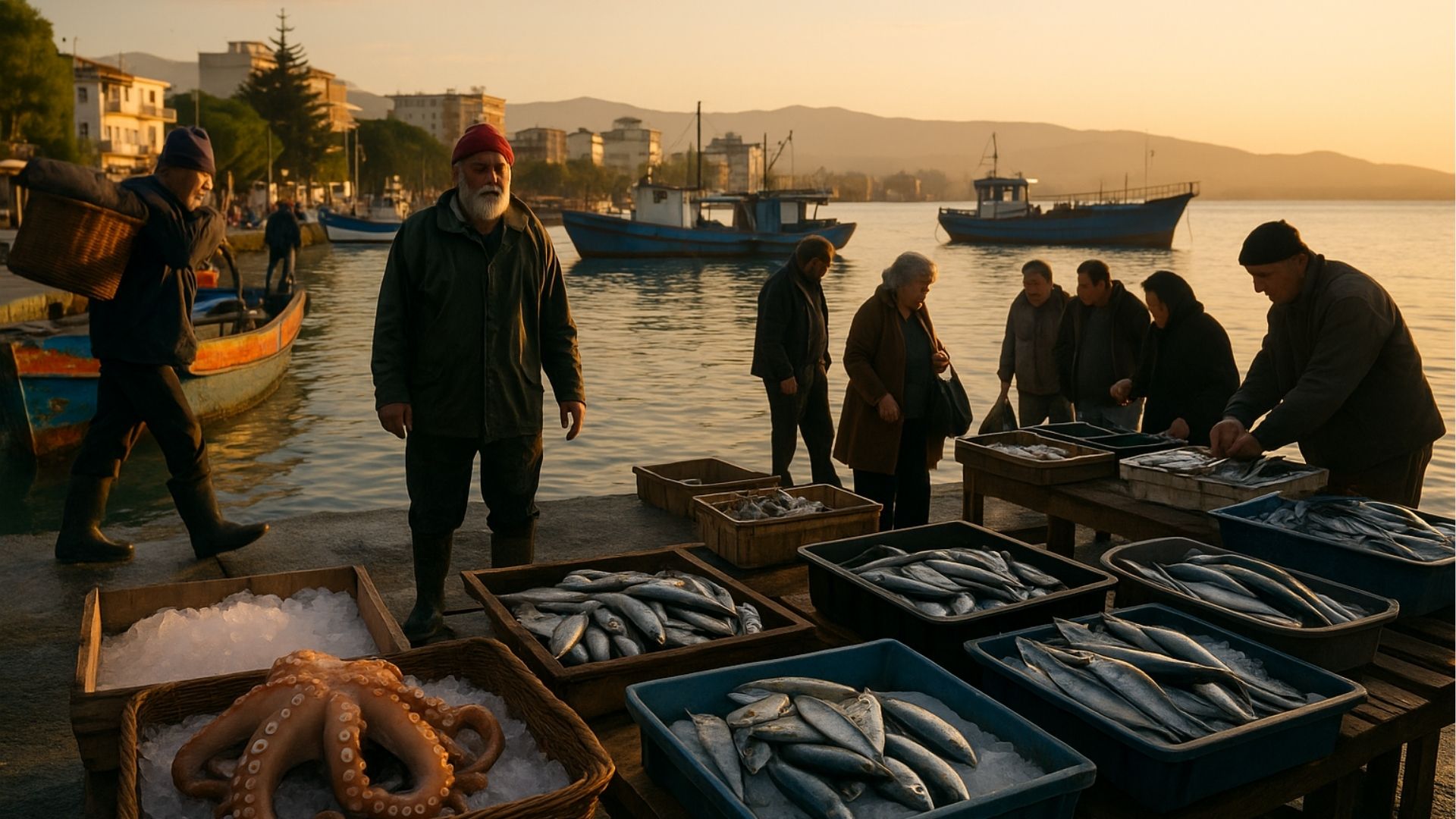
Vlorë’s food is best understood as a living system- a chain linking its port, its markets, and its surrounding villages. To follow this chain is to see how geography, tradition, and human relationships work together to shape what ends up on your plate.
The Markets – Morning’s Pulse
The first step is the fish market at the port. By 6:00 AM, it is in full swing. The scene is vivid: the slap of fish on cutting boards, the hum of scales being scraped, the aroma of brine mixed with the faint tang of diesel from returning boats. Fishermen still in their night’s gear shout greetings to regulars, while older women in headscarves walk from stall to stall, testing the firmness of fillets with practiced fingers.
Here you’ll see the stars of Vlorë’s seafood repertoire – mullet stacked in neat piles, sardines shimmering like quicksilver, cuttlefish coiled in buckets. Mussels arrive in netted bags, still damp from the sea, destined for clay pots or quick grillings. This is where restaurant chefs and home cooks alike decide what the day’s meals will be.
A short walk inland, Pazari i Vlorës – the city’s main food market – offers an entirely different palette. Here, the colours shift from silver and grey to red, green, and gold. Baskets overflow with tomatoes so ripe they release juice at the slightest touch, green peppers glossy with morning dew, figs splitting open to reveal deep magenta flesh. Herbs are sold in generous bunches: oregano, thyme, sage, and wild mint. Small bottles of deep green olive oil stand alongside jars of honey and gliko – preserved fruit in syrup, to be served on a spoon with cold water for guests.
Shopping here is as much about socializing as it is about practicality. Buyers and sellers exchange updates about the harvest, discuss family news, and recommend ways to prepare certain items. A vendor might slip an extra handful of herbs into your bag with a wink, knowing you’ll return.
Travel Beyond the Coast
Stay online as you explore Vlorë’s hidden coves and nearby villages.
The Villages – Food at Its Source
Leaving the city, the roads to Orikum, Dukat, and Babicë e Vogël take you into landscapes that have supplied Vlorë’s tables for centuries. These villages aren’t tourist facades – they are working communities where meals are still dictated by season and terrain. They also reflect the essence of Lesser-Known Albanian Cities Worth Exploring in 2025, where authenticity, community, and culinary heritage remain untouched by mass tourism.
Orikum- Positioned where the hills meet the sea, Orikum is famous for its mussels. Unlike those in larger restaurants, many here are cooked in ash or clay pots over open fires, often with just white wine, garlic, and herbs. Lakror pies are another local pride – thin layers of pastry encasing wild greens or leeks, baked until the edges crisp. Sheep’s milk cheese is crumbly and tangy, often eaten with thick slices of tomato and fresh bread. Arrive in the afternoon, and you might be invited into a courtyard for dinner, even if you’ve never met the host before.
Dukat- This hilly village leans toward heavier, slow-cooked dishes. Arapash here is dense and deeply flavoured, made with lamb, cornmeal, and a generous dose of mountain herbs. In spring, nettle soup appears on tables – a vivid green broth with an earthy, almost nutty flavour. Goat is a seasonal treat, slow-cooked in clay pots until the meat nearly dissolves into the sauce. The oregano grown here is so aromatic that it’s sought after far beyond the region.
Babicë e Vogël- Known for its olive oil, Babicë is a place where tasting oil is as formal as tasting wine. Hosts serve it with warm, hand-kneaded bread, marinated olives with garlic and orange zest, and plates of herb-fried courgettes. Lunch might include pickled peppers, grilled local sausage, and salad dressed only with oil, salt, and lemon – proof that the simplest combinations are sometimes the best.
Harvest & Seasonal Eating
While you can eat well in Vlorë year-round, late summer to mid-autumn is a particularly rewarding time for food lovers.
- Figs are in abundance, eaten fresh, sun-dried, or boiled into syrupy compote.
- Tomatoes are at their sweetest, perfect for slicing with a pinch of salt or blending into chilled sauces.
- Corn is harvested both for fresh boiling and milling into flour for breads and stews.
- Herbs are gathered and dried, ready to be used in winter cooking.
By mid-October, the olive harvest begins. Visitors are sometimes invited to join – laying tarps under trees, picking by hand, or watching the olives being cold-pressed into vivid green oil. Tasting that first press, peppery and alive, with bread and sea salt, is an experience that anchors itself in memory.
Cooking with Locals – Lessons Without Aprons
Unlike formal cooking classes in larger European cities, Vlorë’s food lessons are often unadvertised and entirely personal. Your guesthouse host might know someone in the village who can teach you how to roll byrek dough so thin it’s almost transparent. A taxi driver could introduce you to a cousin who makes cheese in his backyard.
These sessions aren’t about recipes – they’re about technique and intuition. You’ll be told when to stir, when to knead, and when to taste. You’ll learn why some dishes demand clay pots, how to balance vinegar and oil in pickled salads, and why raki is more than a drink – it’s part of every significant gathering. Meals usually end at a long table with the family, the food shared directly from the pot or platter.
Instant Data, Seamless Travel
Enjoy instant connectivity the moment you land in Albania.
Evenings, Memories & Last Bites
Evenings in Vlorë are slow by design. While the city does have a scattering of modern bars and music venues, the heart of its night-time culture beats at the dinner table. This is when families gather, when neighbours drop by unannounced, and when a guest is rarely allowed to leave without at least one plate of something warm.
Urban Evenings – Courtyards & Conversations
In the city, shaded courtyards double as dining rooms in the summer. Long wooden tables are set under vines heavy with grapes, and dishes arrive steadily throughout the evening – grilled fish fresh from the morning’s catch, seasonal salads dressed in peppery olive oil, plates of meze that might include cheese, olives, cured meats, and fig compote. Conversation drifts from the day’s events to family news, and often, a song might start softly in one corner of the table.
Village Nights – Stories in Every Bite
In the villages around Vlorë, evening dining takes on an even more intimate tone. There are no neon signs or menus to consult – just the warm light spilling from a kitchen window and the smell of wood smoke in the air. A meal might be goat roasted with chestnuts, accompanied by polenta and pickled peppers. Mountain tea, steeped with lemon balm, often follows, served alongside a plate of walnut-stuffed figs.
What makes these nights memorable isn’t just the food, but the stories told between courses. Elderly hosts recall how certain dishes survived through the ration years, how weddings used to be catered entirely by the village, or how the first imported sugar changed dessert recipes forever. Every bite becomes a bridge between past and present.
Small Bites with Big Stories
Some of Vlorë’s most enduring food traditions are found not in formal meals, but in the small snacks that carry both flavour and memory.
- Çapa – Flat, oven-baked corn biscuits often eaten with cheese.
- Gliko me Ftonj – Preserved quince in syrup, served cold on a teaspoon with a glass of water.
- Petullat me Sheqer – Fried dough sprinkled with sugar, a common roadside treat.
- Dhallë – A tangy yoghurt drink sold in glass bottles, refreshing in summer heat.
- Bread with Grape Jam – A breakfast favourite in local homes, rarely seen on restaurant menus.
These snacks are rarely advertised, but you’ll find them in markets, small bakeries, and sometimes offered spontaneously when visiting someone’s home.
Staying Connected for a Culinary Journey
Rural Vlorë is a place of winding roads, unnamed streets, and directions based on landmarks rather than signposts. In these areas, Wi-Fi is rare and mobile coverage can be patchy- which is why having an eSIM for Albania is more than a convenience; it’s a necessity for independent travelers.
With Voye Global, you can:
- Navigate directly to the pinned but unnamed village kitchens.
- Translate Albanian food names or cooking terms instantly.
- Contact hosts when directions involve “turn left after the third olive tree.”
- Use ride-hailing apps in areas without taxi stands.
By eliminating the need for physical SIM swaps or hunting for kiosks, Voye Global ensures that your culinary exploration runs smoothly. Whether you’re locating a market stall in the city or following a mountain road to a family farm, your connection is constant – and that makes all the difference when every meal is a story waiting to be found.
Conclusion – The Last Bite Before You Go
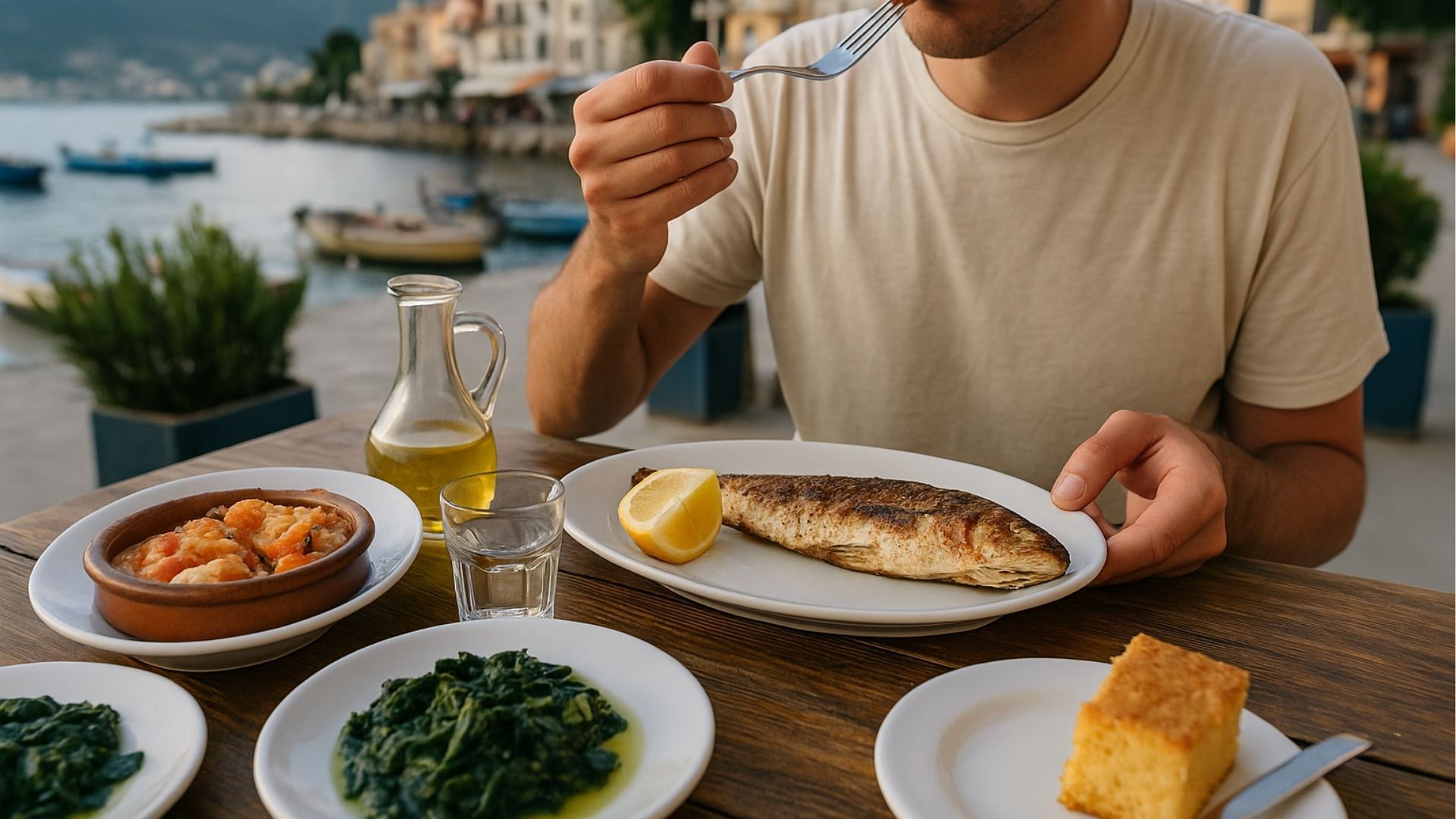
In Vlorë, food is not simply something you consume – it’s an unbroken thread connecting geography, history, and community. The salt in a grilled fish speaks of the Ionian Sea. The tang in yoghurt-baked lamb reflects the herbs and pastures of the mountains. A jar of gliko preserves not only fruit but the memory of a harvest and the hands that prepared it.
From the bustle of the port at dawn to the quiet of a village courtyard at night, every step in Vlorë’s culinary journey reveals a layer of its identity. Meals are not rushed; they are savoured, shared, and steeped in context.
For the traveler, this means that to eat here is to participate in the life of the place – to listen as much as to taste, to follow stories from market stalls to mountain slopes. And with Voye Global keeping you connected from plate to port, you can explore without hesitation, letting curiosity guide your next bite.
When you leave Vlorë, the flavours will follow you – in the memory of a first-pressed olive oil, the warmth of bread fresh from a village oven, or the quiet joy of a cup of mountain tea shared at the end of a long meal.
FAQs
1. How does Voye Global make travel easier?
Voye Global makes travel easier by providing instant, reliable eSIM connectivity without the hassle of physical SIM cards.
2. When is the best time to visit Vlorë for food lovers?
Late summer to mid-autumn offers the most variety, with figs, tomatoes, and herbs at their peak, and the olive harvest starting in October.
3. How does Voye Global help when exploring Vlorë’s food scene?
It allows you to navigate to rural kitchens, translate menus or ingredients in real time, and stay in contact with hosts in areas without clear signage or taxi stands.
4. How can travelers find authentic, non-tourist food experiences?
Visit the morning markets, ask locals for tavern recommendations, and consider staying in a guesthouse that arranges village visits or cooking sessions.
5. Is setting up Voye Global complicated?
No. Activation is instant – no need to remove your existing SIM or visit a kiosk.
6. Is it common to be invited into a home for a meal?
In villages, yes. Hospitality is deeply ingrained in the culture, and visitors who show genuine interest in local food often receive spontaneous invitations.
7. Does Voye Global work in rural Albania?
Yes. Its coverage includes both cities and remote villages, ensuring connectivity even in less-developed areas.
8. Are there vegetarian-friendly options in Vlorë?
Yes. Many traditional dishes use vegetables, cheeses, and breads, especially in summer when produce is abundant. Lakror pies, byrek with wild greens, and grilled seasonal vegetables are popular.
9. Why should a traveler choose Voye Global over local SIM cards?
It eliminates queues, physical SIM swaps, and roaming issues, giving you reliable, flexible data access the moment you arrive.
10. What is Vlorë best known for in terms of food?
Vlorë is celebrated for its seafood, especially mullet, sardines, and mussels, as well as mountain lamb dishes, seasonal vegetables, and high-quality olive oil from nearby villages.

Seamless Mobile Data Everywhere
